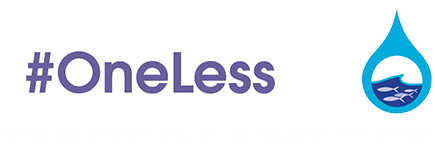On the morning of August 17, France became the fifth of our seven tracking devices to beach onshore. Having narrowly avoided the French coast for a number of days, it finally beached on the North West Coast of Guernsey.

The device landed on a sheltered and accessible beach, Les Amarreurs bay. Its location allowed local beach cleaner Richard Lord, with the help of his son Lawrence, to orchestrate a speedy recovery. We spoke to Richard to better understand how Guernsey is affected by plastics and what the device can tell us.
“We’re finding some very interesting things which this project has made sense of” explains Richard. He has been involved with the Guernsey beach cleaning community for 13 years and photographs his findings (which can be found at his website .
Richard keeps note of the kinds of plastics found at beaches to understand where they have come from and how they have travelled. Interestingly, Richard notes that a sizeable quantity of plastic washing ashore on Guernsey can be tracked to merchant ships.
“Because we’re near the shipping lanes, particularly the inbound shipping lane in the English Channel, we get a lot of litter from Merchant ships”.

He notes finding bottles from southeast Asia, Turkey, Greece, The United Arab Emirates, Saudi Arabia and Egypt which he corresponds with passing ships. “We can tell that the litter has been recently dropped because it’s not degraded and the label is still intact”.
Describing the amount of plastics on Guernsey’s shores Richard states “Every time I visit the shore, I will find plastic bottles.” “In the winter months literally every day you can fill a bin bag from a beach that’s about 100 feet wide”.
Much of what Richard describes, concurs with findings from the beaching of our USA device in Cornwall. It was rescued by Delia Webb of the CPPC (Cornish Plastic Pollution Coalition) who described how types of plastic waste differ along a coastline – ranging from microplastics to whole bottles depending on the area. In Guernsey the situation is simpler, Richard: “Plastic bottles at Petit Port don’t tend to get broken up, which is really interesting, they remain intact whereas on some other beaches in Guernsey […] bottles get ground up and shredded and we get lots of plastic pieces”.


Beach cleaners have played a pivotal role in our ocean plastic project helping us to locate and recover the devices whenever they’ve beached. Richard says that credit should go to all the volunteers who scour our beaches to preserve the ocean from plastic. He particularly mentioned the members of the ‘Found on the Beach in Guernsey’ Facebook group, The ‘Clean Earth Trust’ and Karl Taylor’s ‘Ocean Pollution Awareness Campaign’.
“One thing we have noticed in Guernsey is that the beaches are much cleaner than they were, not because we’re getting less plastic litter washing up, but because so many people are litter picking now, so that’s a huge improvement, but the litter never stops. […] Its all volunteer work, and if we added up the hours, it would be tens of thousands of hours from all the volunteers in Guernsey alone”.
Evidently, the movement of ocean plastics around the English Channel is complex, made more complex by the impact of the shipping lane. “That’s why I think this initiative should be expanded,” says Richard, “I think we need a much better understanding of the movement of plastic litter in the sea”.
The Japan and Italy devices are currently providing information of their own as they head for the French mainland, and the France device will continue to provide valuable data on its re-release. Stay tuned for coverage and thanks to Richard, Lawrence and the many Guernsey beach cleaners for everything they do…
All images used in blog © Richard Lord.






